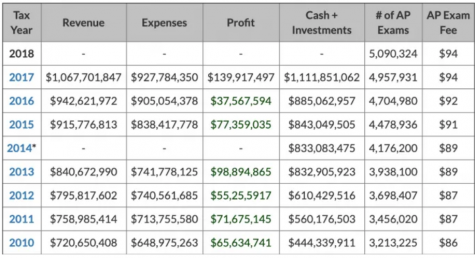A Complete and Unsatisfactory History of American Standardized Testing
May 17, 2021
Each year, millions of students spend long hours preparing for at least one long-anticipated standardized test. By the time one graduates from Eleanor Roosevelt High School, they will have taken around 112 standardized tests for 12 years of schooling, based on research from South Carolina University. Looking further into the history of standardized tests reveals why American schools have so many tests, and how they became ingrained in the foundation of American education.
Standardized testing dates all the way back to ancient China; Those who wished to obtain a government job were required to pass an exam on Confucius poetry and philosophy. Standard exams were not introduced in schools until the progressive era of the Industrial Revolution, when children were encouraged to seek education instead of working in factories and farms. All of a sudden, American schools needed a method of measuring students’ growth and assigning grades for a huge population. Since the mid-1800s the use of standard exams have grown exponentially in content and quantity, and have been capitalized by for-profit organizations.
The Modernization of Standardized Testing
The American education system started using testing as a standard for the school curriculum in 1983, when President Ronald Reagan released A Nation at Risk: The Imperative for Educational Reform. The report emphasized the need to raise educational standards in the public school system as it did not prepare students for society. It advocated for higher expectations, more government funds, and increased testing. This caused extraordinary changes for American education. After action was taken to combat the difficulties in the school system mentioned in A Nation at Risk, students were less likely to be illiterate after school, and teachers were more reliant on tests as a criterion for the information they taught. It also created the impression that more testing equals better education.
This impression featured at its finest when President George W Bush passed the famous No Child Left Behind Act (NCLB) on January 8, 2002. This forced schools to issue annual testing in reading, math, and science in grades 3 – 8, and again in grade 10. It increased the spending for school testing $423 million to $1.1 billion. If schools did not meet the Adequate Yearly Progress (AYP) requirements as determined by test scores, they would be taken over by the state (if private) or closed. While educational standards rose, resources to help disadvantaged students and schools did not match the tempo of progress, causing thousands of students to fall behind and schools in impoverished areas to close. Many schools only taught the information that would help students pass the tests, which limited the time for actual learning and caused programs in the arts and practical knowledge to be undervalued.
A year after President Barack Obama’s election, he enacted the Race to the Top program, which would give $4.35 billion in school funding to the state with the highest test scores. However in the following year, he recognized the fault in relying on test scores and rejected NCLB in favor of other methods of measuring standards, including graduation rates and daily attendance. On November 28, 2011, he said that, “Too often what we have been doing is using the [standardized] tests to punish students or to, in some cases, punish schools.” This partially relaxed the emphasis of test scores for schools, but the effects of NCLB are still prevalent in schools across the country.
Making Money from Standardized Tests
The College Board, as it is well known for administering the Scholastic Aptitude Test (SAT), Preliminary Scholastic Aptitude Test (PSAT), and Advanced Placement (AP) tests, has American standardized tests under its thumb. The company created the SAT in 1926 as a ‘nonprofit’ organization. However, a deeper look into the College Board’s financials reveal that they made over 12 billion dollars, mainly from the high costs of tests. The SAT costs $68 with the essay portion, PSAT costs $17, and AP tests a whopping $93 per student for either the school or test taker to pay. The company is a true monopoly when it comes to standardized tests, as the College Board company website mentions that over 2.2 million students took the SAT in 2020, and the Florida Department of Education states that 4.22 million AP exams are taken each year.
College Board’s financial information from 2010-2017.
Credit: www.financialsamurai.com link
Created in 1959 by American College Testing Inc. (ACT Inc.), the ACT made $353 million in revenue off of expensive tests. The ACT, with writing, cost 70 dollars, and 1.7 million students took the test in 2020. It doesn’t reach as big a demographic as the SAT, being more prevalent in midwestern states, however the combination of ACT and SAT make up a large part of the college admissions process. For generations, passing the SAT or ACT is a staple achievement for college bound students, and each generation has had to pay more and more to have a shot at college education.
A Takeaway
The idea that standardized tests are important and necessary has been enhanced, not just by the government, strict policies, and big companies, but by students as well. Students, who have been shaped by society to value their test scores because, for some of them, it’s just another step to climb to reach their dreams. It raises some questions: What would American public high school be without standardized testing? What would colleges be without test scores built into its admission process? Where would some students be – or have become – had there not been an emphasis on testing? American standardized tests have grown throughout its existence, and through all that, every student must decide for themselves it’s value, and learn how its history affected them.




